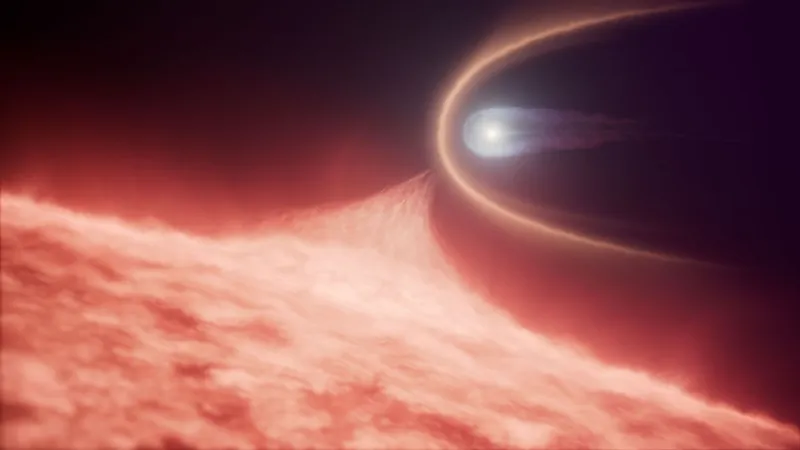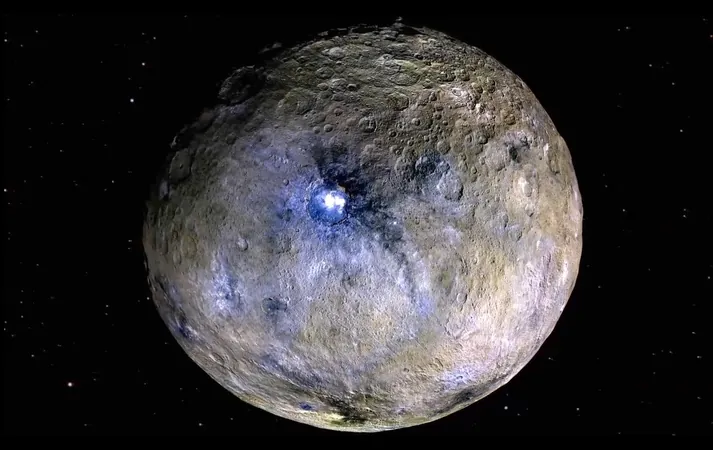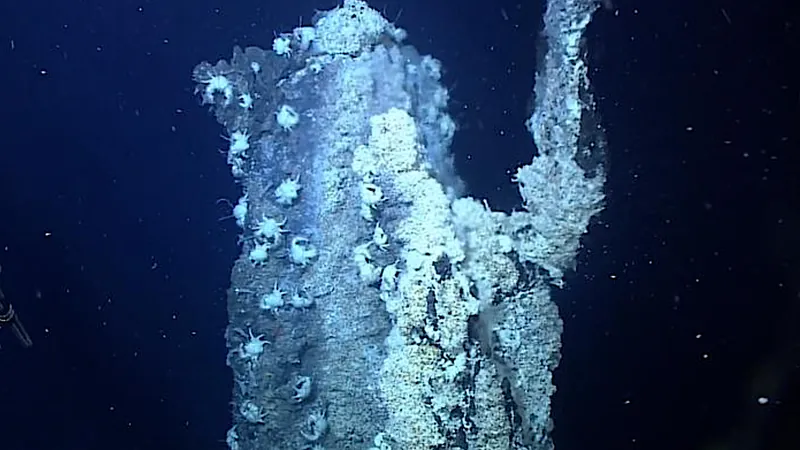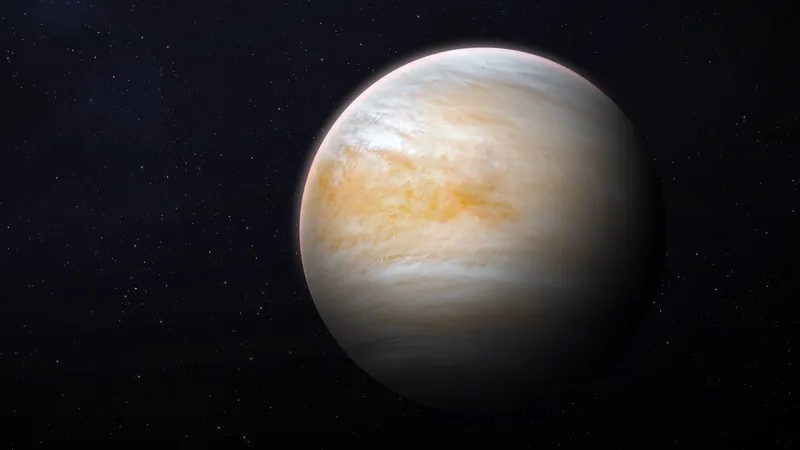
Astronomers Discover Shockingly Unique Star Born from Stellar Collision!
2025-08-18
Author: William
A Stunning Revelation in Our Cosmic Backyard
The Hubble Space Telescope has unveiled a surprising secret about a seemingly ordinary white dwarf star: it originates from an explosive merger of two stars! This groundbreaking finding was highlighted in a recent study led by scientists Snehalata Sahu and Boris Gaensicke from the University of Warwick in the UK.
Gaensicke, a principal investigator of the Hubble program, remarked, "This discovery shows that things in the universe may be far more complex than they initially seem. Until now, this star appeared normal, but Hubble's ultraviolet vision has revealed its fascinating and unexpected history."
Meet WD 0525+526: A Star with a Tumultuous Past
Located a mere 128 light-years from Earth, the star, designated WD 0525+526, initially looked typical under visible light. However, Hubble's advanced observations revealed it has a far more chaotic backstory than anticipated.
White dwarfs are typically the remnants of stars that have burnt through their nuclear fuel, collapsing into objects about the size of Earth, yet they can weigh incredibly heavy—up to 1.4 times that of our sun. Most form through a predictable process as single stars approach the ends of their lifespans, a fate similar to that of our sun in about 5 billion years.
A Star Born from Chaos!
But the case of WD 0525+526 is startlingly different. Instead of being a product of a single star's demise, it seems to have emerged from the violent clash of two stars, a scenario that left subtle yet identifiable traces in its atmospheric chemistry.
When Gaensicke and his team utilized Hubble's ultraviolet capabilities to examine WD 0525+526, they discovered an extraordinary amount of carbon in its atmosphere—a clear indicator of a stellar merger.
Normally, white dwarfs have layers of hydrogen and helium that shield their carbon cores. In merger events like this, the intense collision can peel away these outer layers, exposing the carbon underneath. Although such signals are hard to spot in visible light, Hubble's prowess in ultraviolet wavelengths makes them much clearer.
An Attractive Anomaly Among White Dwarfs
What makes WD 0525+526 even more intriguing is that it boasts a scorching surface temperature of nearly 21,000 Kelvin (about 37,000 degrees Fahrenheit) and a mass 1.2 times that of the sun—distinguishing it as one of the hottest and heaviest known remnants from stellar mergers.
Its seemingly normal appearance in visible light has led astronomers to speculate that an entire population of white dwarfs may be hiding similar explosive histories.
Future Research and Cosmic Mysteries Await!
Antoine Bedrad, another researcher from the University of Warwick who co-led the study, excitedly stated that the next step involves investigating how common carbon-rich white dwarfs are within this category and what other hidden stellar mergers might exist among the ordinary white dwarfs.
Such insights could significantly enhance our understanding of white dwarf binaries and their intriguing role in supernova explosions, revealing just how adventurous our universe truly is!









 Brasil (PT)
Brasil (PT)
 Canada (EN)
Canada (EN)
 Chile (ES)
Chile (ES)
 Česko (CS)
Česko (CS)
 대한민국 (KO)
대한민국 (KO)
 España (ES)
España (ES)
 France (FR)
France (FR)
 Hong Kong (EN)
Hong Kong (EN)
 Italia (IT)
Italia (IT)
 日本 (JA)
日本 (JA)
 Magyarország (HU)
Magyarország (HU)
 Norge (NO)
Norge (NO)
 Polska (PL)
Polska (PL)
 Schweiz (DE)
Schweiz (DE)
 Singapore (EN)
Singapore (EN)
 Sverige (SV)
Sverige (SV)
 Suomi (FI)
Suomi (FI)
 Türkiye (TR)
Türkiye (TR)
 الإمارات العربية المتحدة (AR)
الإمارات العربية المتحدة (AR)